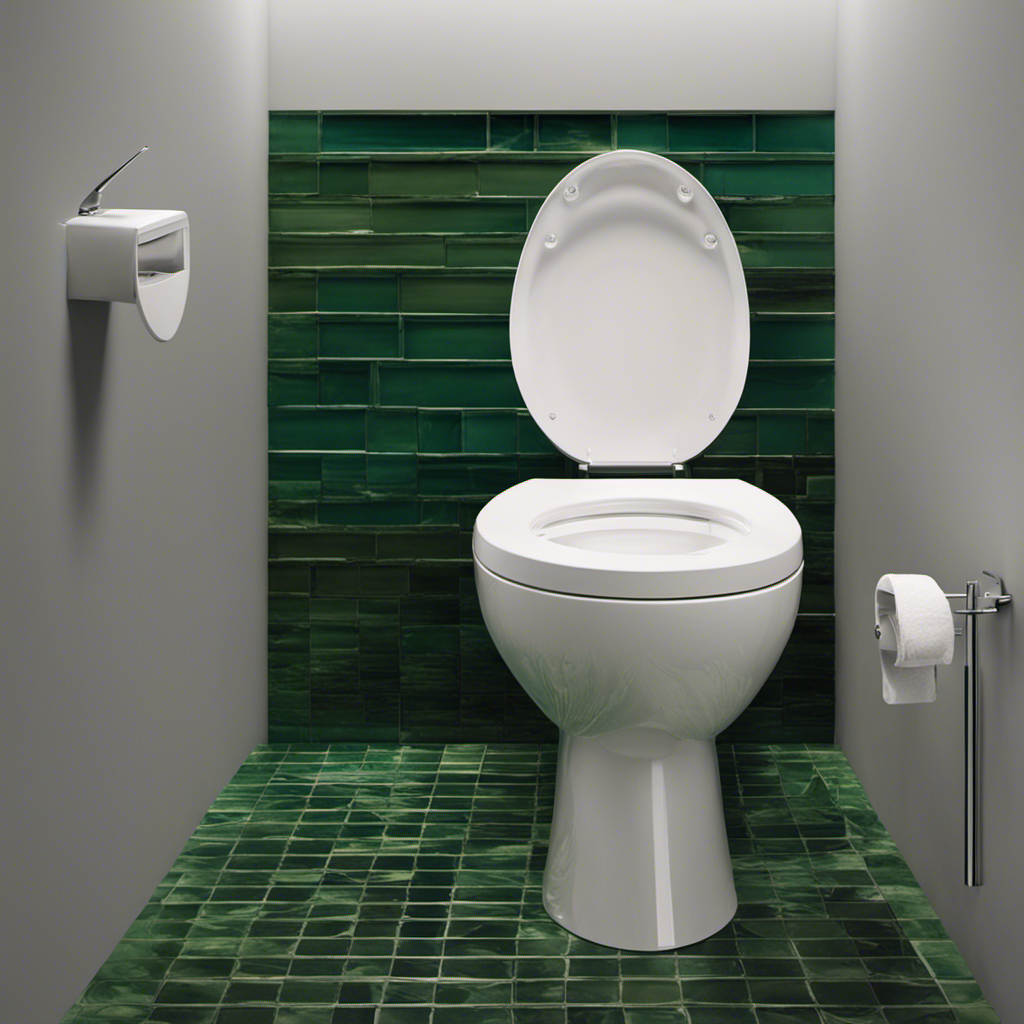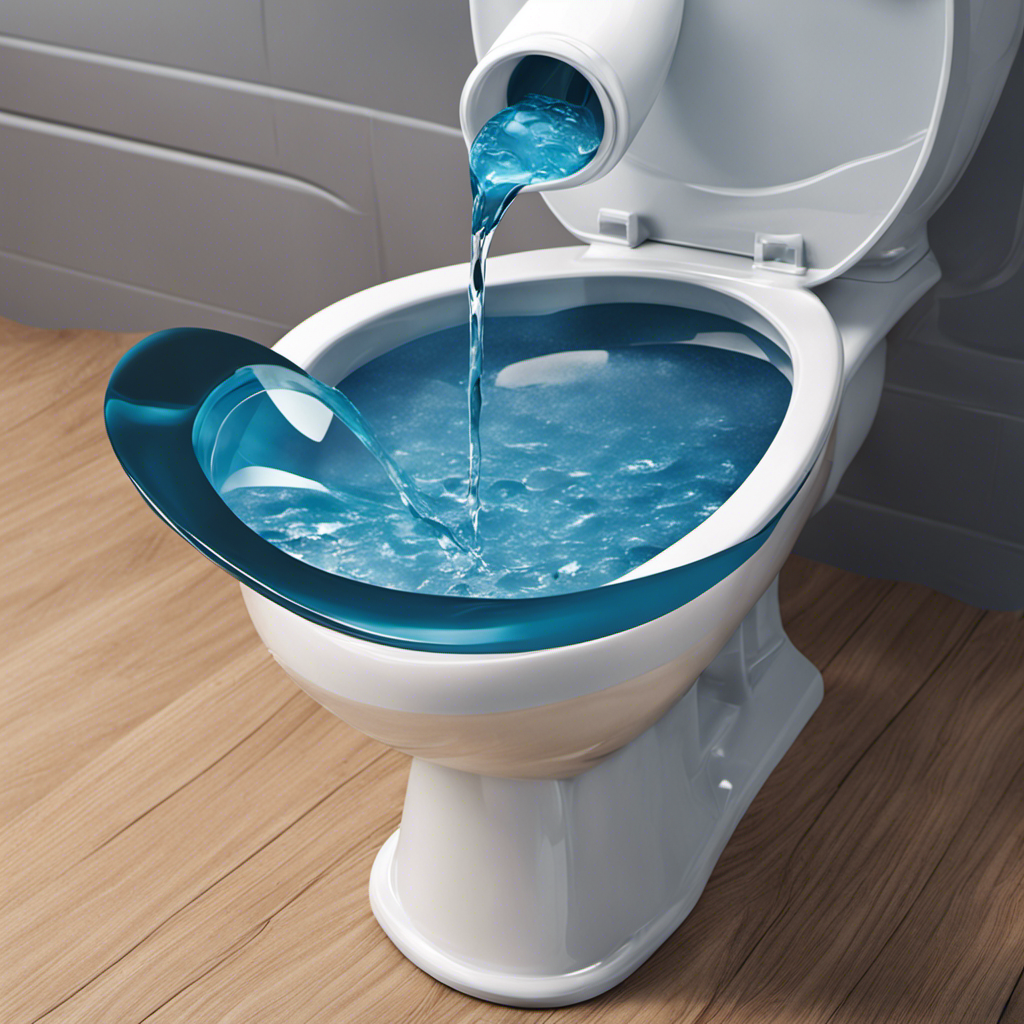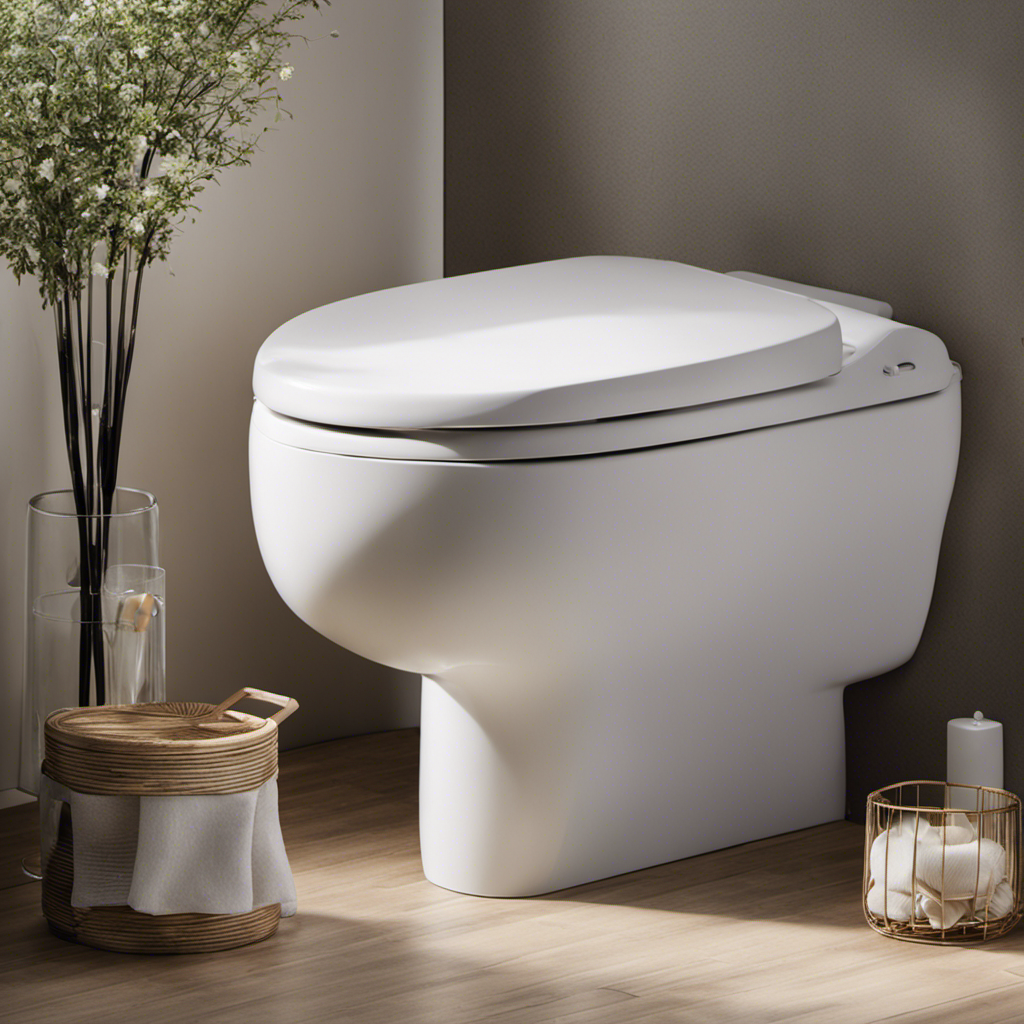Have you ever wondered how to adjust the water level in your toilet bowl? Well, wonder no more!
In this article, I will guide you through the process step by step, providing you with the tools and materials needed for the job. Whether you’re dealing with a too high or too low water level, I’ve got you covered.
So, get ready to take control of your toilet bowl’s water level and ensure optimal performance. Let’s dive in!
Key Takeaways
- Understanding the water level in the toilet bowl is crucial for proper functioning and efficient flushing.
- Common reasons for water level issues include a misadjusted float, a worn or damaged flapper, and faults in the fill valve.
- The tools and materials needed for adjusting the water level include an adjustable wrench, a water level gauge, a screwdriver, plumbers tape, and a bucket with cleaning solution.
- To lower the water level, the water supply should be shut off, the remaining water should be flushed, and the water level adjustment screw on the fill valve should be turned counterclockwise.
Understanding the Water Level in Your Toilet Bowl
Understanding the water level in your toilet bowl is crucial for proper functioning. Troubleshooting toilet bowl water level fluctuations is essential to ensure everything is running smoothly.
Maintaining the correct water level in a toilet bowl is of utmost importance for efficient flushing and preventing any potential issues. The water level should be set at a specific height to ensure proper flushing and to prevent overflows.
If the water level is too high, it can lead to constant running or even water overflowing from the bowl. On the other hand, if the water level is too low, it may result in weak flushing or incomplete waste removal.
Identifying common reasons for water level issues will help you adjust and maintain the correct water level in your toilet bowl.
Identifying Common Reasons for Water Level Issues
You can find common reasons for water level issues in your toilet by checking the float, flapper, and fill valve. Here are some troubleshooting tips for maintaining the water level in your toilet bowl:
-
Check the float: Ensure that the float is properly adjusted. If it’s set too low, the water level will be too low. Adjust it to the correct height, usually indicated by a marked line on the overflow tube.
-
Inspect the flapper: The flapper is responsible for controlling the water flow into the bowl. If it’s worn or damaged, it may not close properly, causing water to continuously leak into the bowl. Replace the flapper if necessary.
-
Test the fill valve: The fill valve regulates the water supply to the tank. If it’s faulty, it may not be allowing enough water into the tank, resulting in a low water level. Clean or replace the fill valve if needed.
Tools and Materials Needed for Adjusting the Water Level
Inspecting the float, flapper, and fill valve requires specific tools and materials to properly adjust the water level in your toilet. To maintain the water level in your toilet bowl, you’ll need the following:
| Tools | Materials | Purpose |
|---|---|---|
| Adjustable wrench | Water level gauge | Adjusting the float and fill valve |
| Screwdriver | Plumbers tape | Tightening or loosening connections |
| Bucket | Cleaning solution | Cleaning and disinfecting the toilet |
Using an adjustable wrench, you can adjust the float to control the water level. A water level gauge helps you measure the water level accurately. If there are leaks, use plumbers tape to seal any loose connections. A bucket and cleaning solution are essential for maintenance and troubleshooting water level problems. By having these tools and materials on hand, you can easily adjust and maintain the water level in your toilet bowl.
Step-by-Step Guide to Lowering the Water Level
Using an adjustable wrench and a water level gauge, you can easily lower the water level in your toilet. Follow these steps to troubleshoot common toilet bowl problems and improve flushing efficiency:
-
Shut off the water supply to the toilet by turning the valve located behind the toilet clockwise.
-
Flush the toilet to drain the remaining water in the tank and bowl.
-
Locate the water level adjustment screw on the fill valve and use the adjustable wrench to turn it counterclockwise to lower the water level. Check the water level gauge to ensure it is below the overflow tube.
Understanding the impact of water level on toilet flushing efficiency is crucial. A water level that is too high can cause water to constantly flow into the overflow tube, wasting water and increasing your water bill. On the other hand, a water level that is too low may result in weak flushes and incomplete waste removal.
Step-by-Step Guide to Raising the Water Level
Understanding how to properly raise the water level in your toilet is essential for maintaining optimal flushing efficiency. Troubleshooting common toilet bowl water level problems can help ensure that your toilet is functioning properly. Here are some tips for maintaining the optimal water level in your toilet bowl.
| Problem | Possible Cause | Solution |
|---|---|---|
| Low water level | Blocked or partially closed fill valve | Check the fill valve and ensure it is fully open |
| Uneven water level | Malfunctioning flapper or faulty fill valve | Replace the flapper or fill valve as needed |
| Constantly running water | Faulty fill valve or flapper | Replace the fill valve or flapper to stop the water from running |
To maintain the optimal water level, regularly check the fill valve and flapper for any signs of wear or damage. Adjust the water level by adjusting the float on the fill valve. Ensure that the water level is not too high or too low, as it can affect flushing efficiency. By following these tips, you can maintain a properly functioning toilet with an optimal water level.
Frequently Asked Questions
Can Adjusting the Water Level in the Toilet Bowl Help Save Water?
Adjusting the water level in the toilet bowl can help save water. It has water conservation benefits and can lower utility bills. By reducing the amount of water used per flush, we can contribute to a more sustainable and cost-effective household.
What Should I Do if Adjusting the Water Level Doesn’t Fix the Issue?
If adjusting the water level in the toilet bowl doesn’t fix the issue, there are alternative solutions. One option is to check the fill valve and flapper for any problems. If all else fails, calling a professional may be necessary.
How Often Should I Check and Adjust the Water Level in the Toilet Bowl?
I check and adjust my toilet bowl water level regularly to prevent any issues. It’s important to troubleshoot common water level problems and maintain proper levels. Here are some tips for keeping your toilet bowl functioning properly.
Are There Any Safety Precautions I Should Take When Adjusting the Water Level?
Adjusting water level in toilet bowl can be done safely without professional help. However, there are potential risks involved. It’s important to follow safety precautions such as turning off water supply and wearing gloves.
Can I Use Any Household Items as Tools to Adjust the Water Level in the Toilet Bowl?
I can adjust the water level in the toilet bowl using household items as alternative tools. It’s important to be precise and technical to ensure proper adjustment and avoid any potential issues.
Conclusion
In conclusion, adjusting the water level in your toilet bowl is a simple and straightforward task that can be done with just a few tools and materials. By following the step-by-step guides provided, you can easily lower or raise the water level to meet your specific needs.
Remember, maintaining the proper water level is essential for the optimal functioning of your toilet. So, don’t delay, dive into the DIY world of toilet bowl water level adjustment and enjoy a flawlessly flowing flush!










